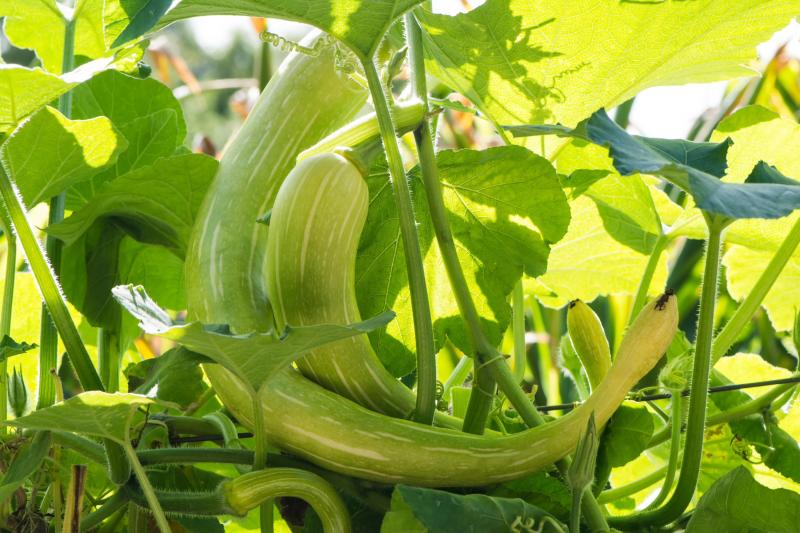Here’s a squash to share and make into squares
Amish dolls don’t have faces. This is because the Amish believe that vanity is sinful, and everyone is equal in God’s eyes. The Amish make the dolls themselves and also make most of their own food including butter noodles, a pickled vegetable relish called chow-chow, apple butter, and autumn squash squares made from winter squash. One of the best winter squashes is the Pennsylvania Dutch crookneck (Cucurbita moschata), a medium to large tan squash that averages 10-20 pounds.
It has a bulbous end with a long, curved neck ending in a rough green stem. The thin, smooth skin of this squash covers the deep-orange flesh that is moist, fine-grained and firm. When cooked, it is sweet and tender, with a mild, nutty flavor. All of the seeds are contained in a small cavity in the bulbous end of the squash, making for easy removal.
Also known as Amish crookneck squash or neck pumpkin, this heirloom is famous for its simple preparation. The skin is quite thin, making it easier to slice than winter squash or traditional pumpkins. The squash can be served as a side dish or used to make pies, squash butter and even soups.
Neck pumpkins are nutritious, with lots of potassium, folic acid, vitamin A, and beta carotene. They are also a good source of dietary fiber.
Pennsylvania Dutch crookneck squash is commonly cooked by roasting, baking, boiling, steaming, and even slicing and grilling. It can be used in any recipes that call for pumpkin or butternut squash.
You can peel the skin before or after cooking. Try adding pureed squash to soups and sauces. Cubed, it makes a perfect risotto, casserole or even a spicy curry. It is excellent in pumpkin pie or pumpkin bread and muffins, even pumpkin cookies.
The cooked squash makes a rich stuffing for ravioli, tacos, empanadas and enchiladas. Neck pumpkin goes well with fruits such as apples and pears.
This hardy squash will store for several months in a cool, dry place such as a cellar or unheated garage. This is an old heirloom squash grown by the Pennsylvania Amish for centuries. It was first mentioned in writing in 1749.
Plant the seeds directly in the garden in the spring, after all danger of frost has passed and the ground is warm. Sow six to eight seeds 1-inch deep in hills several feet apart. Once the plants have sprouted, thin to 3 or 4 plants per hill. Water them once a week, or when the soil is dry to the touch. Your Pennsylvania Dutch crookneck squash will be ready to harvest about 100 days after planting.
Seeds are widely available or can be ordered from Seed Savers Exchange (www.seedsavers.org).
Plant Pennsylvania Dutch crookneck squash and you will be growing a healthy heirloom. You will have plenty to share with friends and strangers, remembering that like the faceless Amish dolls, we are all equal.

























































